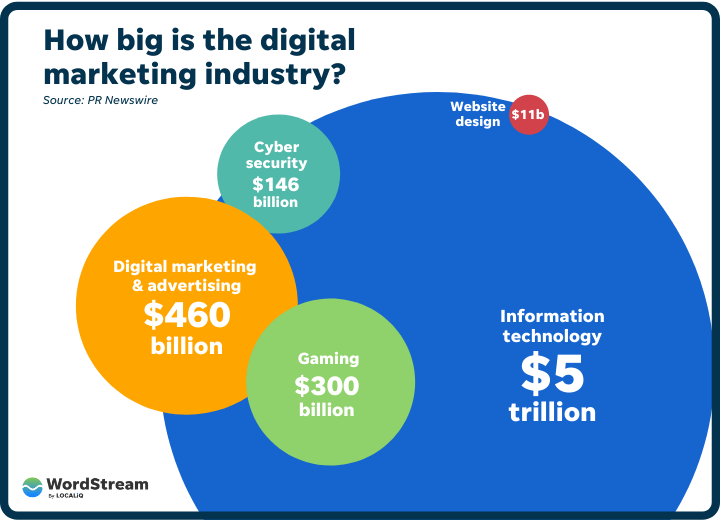Market activities for new businesses are very different from the marketing activities for an already established business. Because of the confusion between new business marketing activities and existing business. This leads to 95% of new businesses ending up failing.
Market activities for new businesses refer to the process of learning customers’ problems and the need to provide appropriate solutions to these problems. Also, these activities are searching for the best channels to reach out to potential customers and convince them to buy their products.
The truth is that the new business has limited knowledge about their market and their customers. So, the marketing activities for new companies focus on learning about the market and customers. After the learning phase is complete, the new business can build an effective marketing plan and marketing strategy to be used by marketing teams next stage. Not understanding this truth is a fatal mistake. Therefore, this article shows you the exact meaning of marketing activities for new businesses and how to use them.
💡 Helpful Statistics About Marketing:
● 82% of companies report using content marketing.
● On average, email marketing has a 4400% ROI. (OptinMonster)
● 76% of content marketers use organic traffic as a key metric for measuring content success. Only 22% use backlinks.
.
● 78% of salespeople using social media perform better than their peers. (Screwpile Communications)
● 98% of sales reps with 5000+ LinkedIn connections meet or surpass sales quotas. (The Sales Benchmark Index)
● There are 1.5 billion social media users across the globe. (McKinsey and Company)
● The purpose of content marketing is to create and share relevant information to attract and engage a target audience that’s interested in
your product or service.
● Blogs with educational content get 52% more organic traffic than blogs with company-focused content.

Table of Contents
Introduction to marketing activities for a new business
Intellectuals and management scientists have given different names to marketing activities for new businesses. In order not to be confused with other marketing activities used in other businesses in the market. For example
- Usually, a new business is called a Startup company.
- One of the most famous startup gurus is Steve Blank, who Defines a startup as a temporary organization in search of a business model. Searching for the business model also means searching for marketing activities for a new business or startup. For more information about business models read this article
- The Customer development method is used for search on the business model and marketing activities is called the method. Refer to How a startup works article for more information
These new names will make significant differences in the study and learning of different new business topics.
How to build marketing activities for a new business?
The Customer Development method will use to build the marketing activities for a new business.
The customer development method consists of four steps. These steps are Customer discovery, Customer validation, Customer creation, and Company building. These steps are easy to understand.
Customer discovery
New businesses first start by identifying new customers. This happens by making assumptions about who their customers are and their exact problems for their customers. Moreover, how customers will buy the products. Then the new business or startup is working to turn those assumptions and hypotheses into truth. This is done by test those hypotheses mainly through interviewing potential customers.
The four phases of the customer discovery step (process) within a new business include:
- State your hypotheses: New businesses should write down their core business assumptions in a set of briefs. These form the basis for subsequent testing.
- Test your hypotheses: New business should seek validation for its hypothesis. therefore, the new businesses should speak more on those hypotheses around its target market, including potential customers, Analysts, and the media. So, these hypotheses should not be sales-oriented conversations.
- Test your product concept: New business when it has a deeper understanding of the customer problem, it should test its product idea to get a sense of the relevance and attractiveness of its product solution and its features. A new business needs to do this by engaging potential customers and sharing information with their product development team.
- Evaluate customer feedback and determine the next steps: New business needs to reflect on the information obtained in steps 2 and 3. consequently, the new businesses should be ready to move forward to the next steps depending on the result of the test experiments.
Customer validation
A new business needs to obtain hard evidence regarding the possible success in the business model. A new business cannot just assume that customers will buy their product even if they say they might. Customer validation proves whether new business assumptions are correct before a new business spends too much money. According to Steve Blank, too many new businesses fail because they work based on their assumptions.
Many new businesses either do not know how to validate their knowledge or skip the customer validation process altogether.
If the new business doesn’t validate its knowledge, it only pushes failure off into the future. Therefore, Customer validation helps new businesses to avoid building a product that customers don’t want. This forces new businesses to get out of the building and talk to real customers out there.
Customer creation
New business moves to this step of customer creation after it has found its initial customers and made its initial sales. So, The main goal of customer creation on new business is to provide an experience that drives market demand into the sales channel of the startup business.
Customer creation is an important part. In this stage, a new business starts to spend more on marketing and its goods to validate customers Those obtained in the Customer validation stage. As a result, this prevents new businesses from spending large sums of money trying to attract the wrong customers to their business.
Customer creation helps new businesses to avoid wasting time and money trying to position the new business in the wrong market. When new business spending is targeted towards its validated customers and demand, it’s very effective. Therefore, this helps new businesses control their cash burn rates by marketing to real customers interested in their product. These customers are valuable because they validate the new business value propositions and demonstrate their real customer base.
Company building
At this stage, the new business needs to appoint departments that potentially include a vice president of sales or a vice president of marketing. So, with these departments opened, the executives that lead the new business need to move away from a learning and discovery methodology and move towards a mission-oriented method. Therefore, This mission-oriented method helps the new business exploit the information validated from the first three steps of the customer development model.
The new business needs to understand its place among its customers and in its market. So, new businesses should move from the learning and discovery activities and aim to become mission-centric businesses. For a new business to become a large business, it has to maintain the speed it has a new business and increase staff.
The new business must have a clear mission. Therefore, new business staff needs to work towards the same goals through the task to move forward.
The main differences between Customer Development and Marketing
In short, Marketing is oriented around executing a given plan and market strategy. In comparison, Customer Development is centered on discovering customer needs. That is why startups use Customer Development, while an existing company uses Marketing.
A startup is a temporary company that searches for a business model. The Customer Development method is the process used to organize the search for the business model.
Marketing is the process of developing and delivering value to potential customers. It includes every step you take to sell, service, and manage your customer relationship.
The Marketing department executes steps and strategies pre-prepared for this function. for more information about marketing, you can read the “What are Marketing Activities” article
For more information about the difference between customer development and marketing, refer to this article.
Conclusion
The marketing activities for new businesses are far different from those for an already established business in the market.
The truth is that the new business has limited knowledge about their market and their customers. So, the marketing activities for new businesses focus on learning about the market and customers.
Intellectuals and management scientists gave different names to new businesses to avoid being confused with other marketing activities used in other businesses in the market. For example, a new business called a ststartupmarketing activities for the name business are included with the Customer Development method.
At the beginner, the marketing activities for a new business are not found yet. So, the customer development method will use to build the marketing activities for a new business.
References: Marketing

